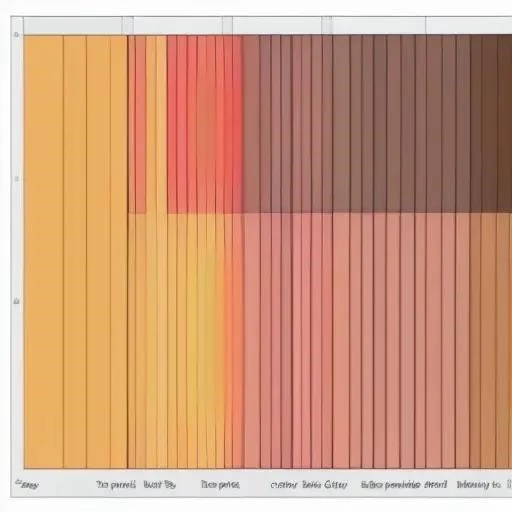The digital frontier is beckoning, and cryptocurrency stands at its vibrant, ever-evolving heart. What began as a niche interest for tech enthusiasts has rapidly transformed into a global financial phenomenon, captivating institutions, individual investors, and visionaries alike. From Bitcoin’s groundbreaking inception to the burgeoning universe of decentralized applications, digital assets are undeniably reshaping our economic landscape, promising a future of unprecedented financial freedom and innovation.
Yet, this exhilarating journey into the digital realm often confronts newcomers with a bewildering lexicon. Terms like “blockchain,” “halving,” and “gas fees” can feel like an impenetrable foreign language, deterring many from exploring its profound potential. Understanding these foundational concepts is not merely beneficial; it is absolutely crucial for anyone navigating the volatile yet immensely rewarding landscape of digital finance. Without a firm grasp of these pivotal terms, investors risk making uninformed decisions, potentially missing out on significant opportunities or falling prey to common pitfalls. By demystifying this essential vocabulary, we empower you to confidently engage with the next generation of financial systems, transforming confusion into clarity and uncertainty into strategic advantage.
Essential Cryptocurrency Terminology: A Quick Reference
| Term | Brief Description | Significance |
|---|---|---|
| Blockchain | A decentralized, immutable ledger system recording all transactions. | The foundational technology ensuring transparency and security. |
| Mining/Staking | Processes for validating transactions and creating new blocks on a blockchain. | Methods for network security, consensus, and earning rewards. |
| Wallet (Hot/Cold) | Software or hardware used to store cryptocurrency and manage private keys. | Crucial for securing digital assets against theft and loss. |
| Decentralized Finance (DeFi) | An ecosystem of financial applications built on blockchain, without intermediaries. | Enabling permissionless lending, borrowing, and trading. |
| Gas Fees | Transaction costs paid to network validators for processing operations. | Reflects network demand and ensures transaction prioritization. |
| Halving | A programmed event that reduces the reward for mining new blocks by half. | Introduces scarcity, impacting supply and potentially price. |
| Yield Farming/Liquidity Pools | Strategies to earn rewards by providing liquidity to DeFi protocols. | Offers passive income opportunities but carries unique risks. |
For deeper dives into the world of digital assets, visit Ethereum.org.
Unpacking the Core Concepts: Your Guide to Crypto Literacy
Blockchain: The Unbreakable Digital Ledger
At the very heart of cryptocurrency lies the blockchain, a revolutionary distributed ledger technology. Imagine a vast, perpetually growing chain of encrypted blocks, each containing a batch of verified transactions. Once a block is added, it is permanently etched into the chain, creating an immutable record that is transparent to all participants yet incredibly secure. This decentralized architecture, famously underpinning Bitcoin and Ethereum, eradicates the need for traditional intermediaries, offering unparalleled transparency and resistance to censorship. As Dr. Gavin Wood, co-founder of Ethereum, aptly observed, “Blockchain is not just about currency; it’s about a new form of human coordination.” Its transformative potential extends far beyond finance, promising to revolutionize everything from supply chains to digital identity.
Mining and Staking: Powering the Network
To keep these intricate blockchains running, two primary consensus mechanisms prevail: Mining (Proof-of-Work) and Staking (Proof-of-Stake). Mining, exemplified by Bitcoin, involves powerful computers solving complex cryptographic puzzles to validate transactions and add new blocks. The first miner to succeed earns newly minted coins, a process consuming significant energy but ensuring robust network security. Conversely, staking, adopted by Ethereum 2.0, requires participants to “lock up” a certain amount of their cryptocurrency as collateral. These “stakers” are then randomly selected to validate transactions and create new blocks, earning rewards proportionate to their staked amount. Both methods are ingeniously designed to prevent fraudulent activities, creating a self-regulating and incredibly resilient ecosystem.
Wallets: Your Digital Strongbox
A cryptocurrency wallet is not a physical place where your coins are stored, but rather a digital tool that manages your public and private keys, which are essential for accessing your digital assets. Think of your public key as your bank account number and your private key as the PIN that grants access. Wallets come in two main types: “hot” wallets, which are connected to the internet (e.g., mobile apps, exchange wallets), offering convenience for frequent transactions, and “cold” wallets, which are offline (e.g;, hardware devices, paper wallets), providing superior security against online threats. Selecting the right wallet is a paramount decision, directly influencing the safety of your invaluable digital holdings.
Decentralized Finance (DeFi): Banking Without Banks
Decentralized Finance (DeFi) represents an astonishing paradigm shift in financial services. Built atop blockchain technology, predominantly Ethereum, DeFi leverages smart contracts—self-executing agreements—to offer traditional financial instruments like lending, borrowing, and trading without requiring traditional banks or intermediaries. Platforms like Aave and Compound allow users to earn interest on their crypto deposits or take out loans, all managed by code rather than corporations. This burgeoning sector is democratizing finance, granting access to an array of services to anyone with an internet connection, fostering financial inclusion on an unprecedented scale.
Gas Fees: The Cost of Doing Business
Just as you pay a toll on a highway, interacting with certain blockchains, notably Ethereum, incurs gas fees. These are transaction fees paid to the network’s validators (miners or stakers) for processing and securing your operations. Gas fees fluctuate based on network demand and congestion; during periods of high activity, they can escalate significantly. Understanding gas fees is critical for budgeting your transactions and for comprehending network scalability challenges. Initiatives are continuously being developed to make these fees more predictable and affordable, promising a smoother user experience in the near future.
Halving: The Scarcity Engine
A unique and profoundly impactful event in the Bitcoin ecosystem is the halving. Approximately every four years, the reward for mining new Bitcoin blocks is cut in half. This pre-programmed scarcity mechanism ensures that Bitcoin’s total supply will never exceed 21 million coins, mimicking the diminishing returns of precious metals. Historically, halving events have been closely watched, often preceding periods of significant price appreciation due to the reduced supply entering the market. This brilliantly engineered scarcity is a cornerstone of Bitcoin’s value proposition, driving its long-term investment appeal.
Yield Farming and Liquidity Pools: Earning Passive Income
For those looking to generate passive income from their crypto assets, Yield Farming and Liquidity Pools offer fascinating opportunities within the DeFi landscape. Yield farming involves strategically moving cryptocurrency between different DeFi protocols to maximize returns, often by providing liquidity to decentralized exchanges (DEXs) or lending platforms. A liquidity pool is essentially a collection of funds locked in a smart contract, facilitating trading on DEXs. By contributing assets to these pools, users become “liquidity providers” and earn a share of the transaction fees. While incredibly innovative, these strategies are not without risk, including “impermanent loss,” where the value of your provided assets might decline compared to simply holding them.
Embracing the Future with Confidence
The world of cryptocurrency, while complex, is undeniably charting a course towards a more open, efficient, and equitable financial future. By investing your time in understanding these essential technical terms, you are not merely learning jargon; you are acquiring the fundamental knowledge necessary to participate meaningfully in a burgeoning digital economy. This newfound clarity will empower you to make informed decisions, identify groundbreaking opportunities, and navigate the evolving landscape with unparalleled confidence.
The journey into digital assets is an ongoing one, filled with continuous innovation and remarkable advancements. Armed with this foundational understanding, you are exceptionally well-prepared to not only witness but actively shape the exciting future of finance. Step forward, explore, and let your informed participation drive the next wave of digital transformation!






